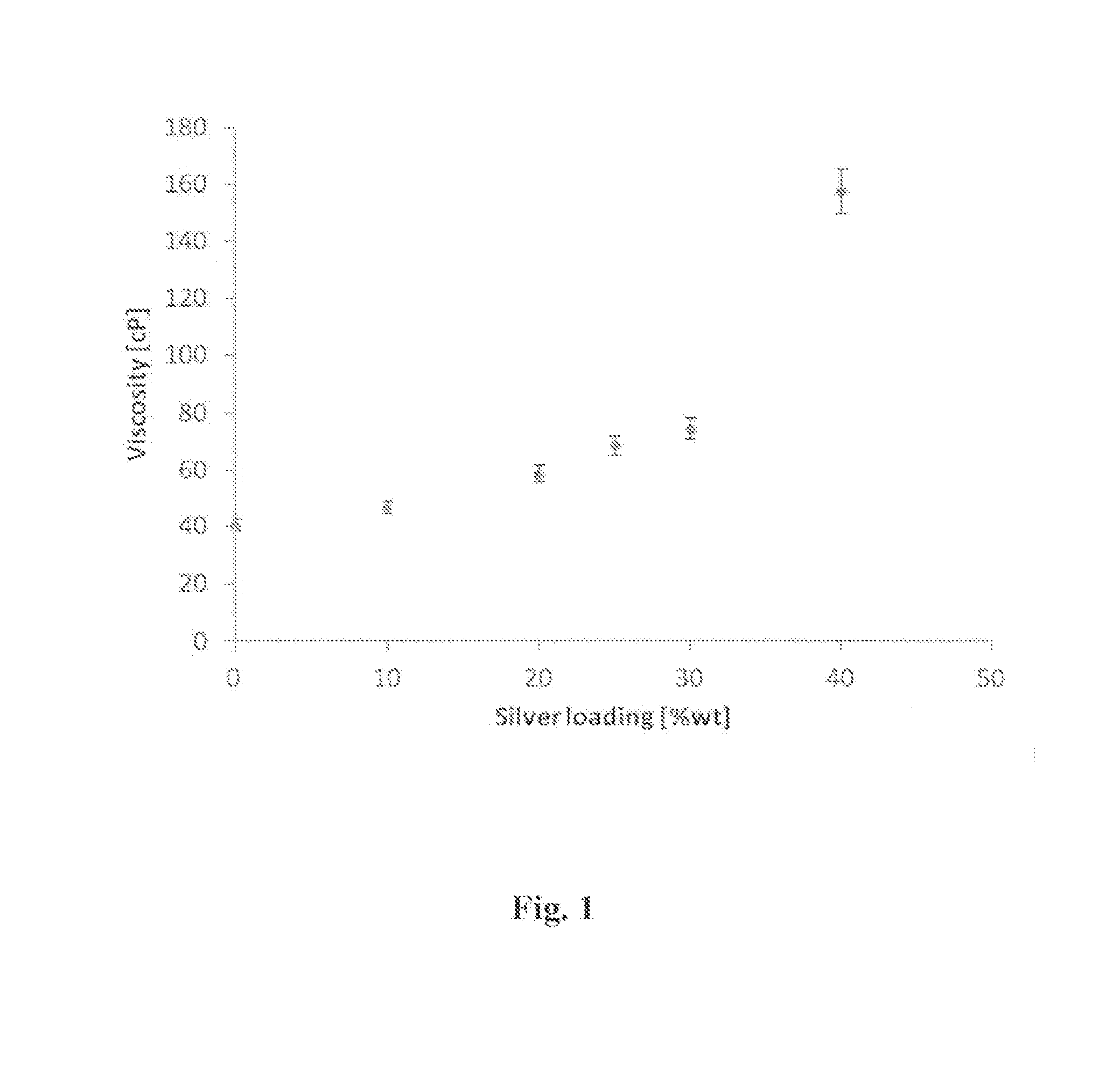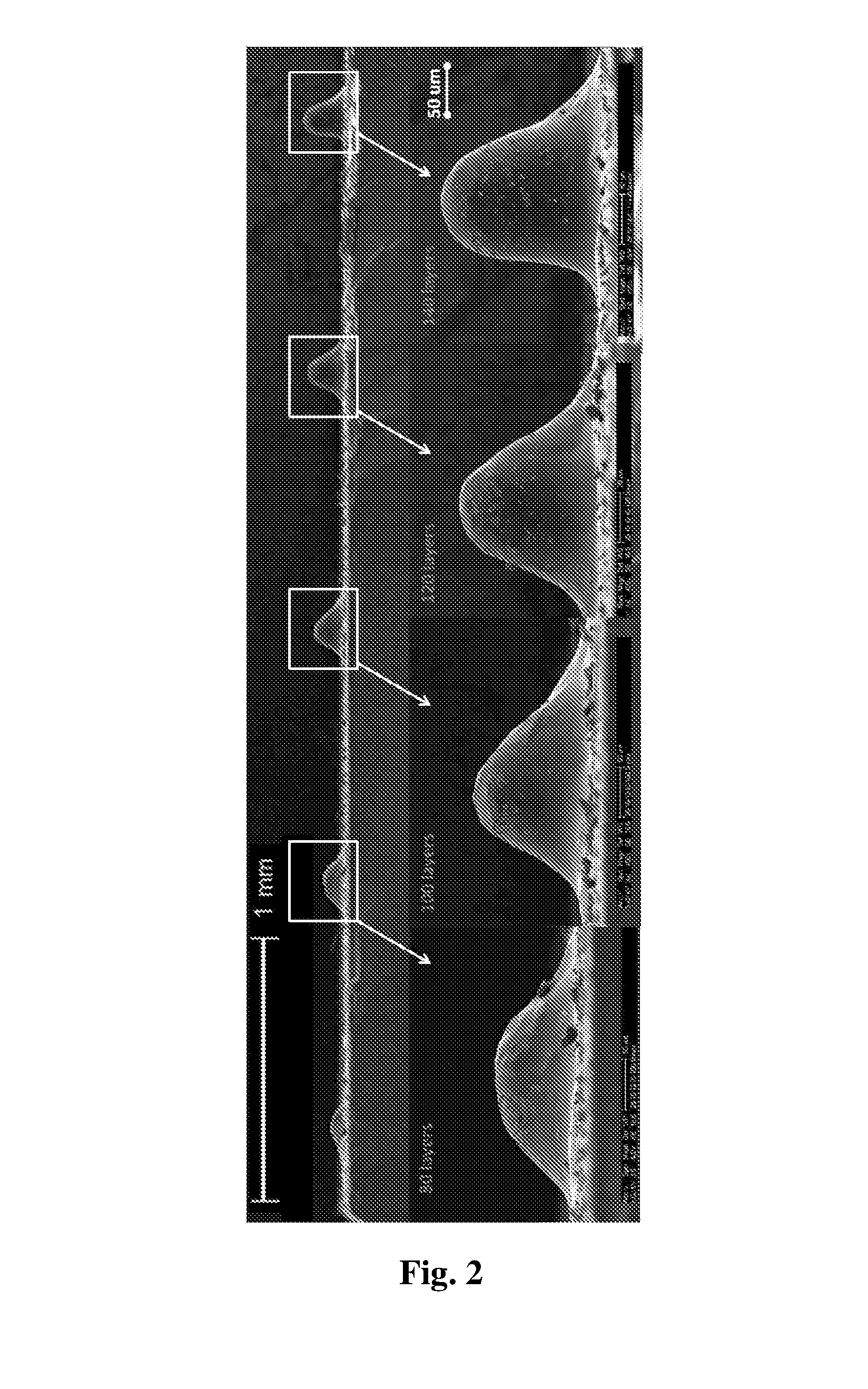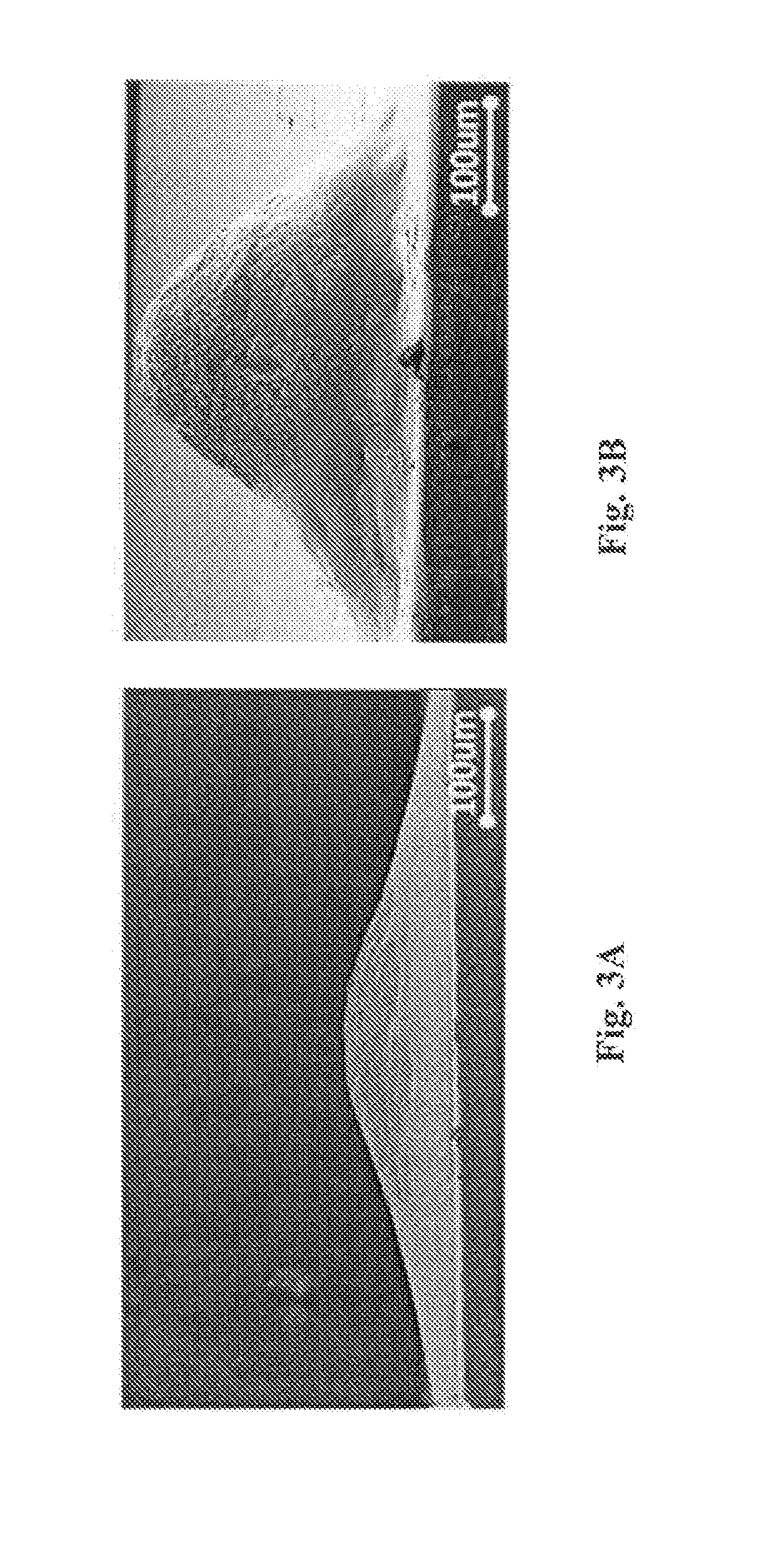Three-dimensional conductive patterns and inks for making same
a three-dimensional, conductive pattern technology, applied in the field of polymerizable conductive ink formulations, can solve the problems of low resistivity, high aspect ratio of printed patterns, flow of ink on the substrate, etc., and achieve the effect of increasing the conductivity of printed patterns, high aspect ratio, and easy customization
- Summary
- Abstract
- Description
- Claims
- Application Information
AI Technical Summary
Benefits of technology
Problems solved by technology
Method used
Image
Examples
example 1
I. Example 1
Obtaining Film from Oil-in-Water (O / W) Emulsion
[0182]In preliminary experiments, the polymerization of the emulsion was tested by exposing a milliliter droplet to a curing source to a period of time sufficient to transform the polymerizable monomer into a solid polymer form.
[0183]Oil-in-water (O / W) emulsion was prepared by homogenizing the monomers in water while using Tween 80 as an emulsifier to obtain the emulsion which the droplet was taken from. The droplet was then exposed to UV light for a few seconds. The liquid droplet immediately transformed into solid, indicating that in spite of the high turbidity, the composition of the emulsion enabled polymerization.
Silver Nanoparticles Preparation:
[0184]The synthesis of silver NP dispersion (42% wt) was performed as described by Magdassi et al. [12], yielding nanoparticles which are stabilized by polyacrylic acid sodium salt (PAA, MW 8 kD) having an average size of 14±3 nm and zeta potential of −42 mV. The resulting dispe...
example 2
II. Example 2
3D Printing Pattern of Dots on Substrate
Materials and Methods of Preparation
UV Reactive Oil Phase Preparation:
[0191]The oil phase was composed of the following components:
[0192](1) Monomers: Dipentaerythnitol Hexaacrylate (DPHA) and Trimethylolpropane Triacrylate (TMPTA) at 2:3 weight ratio.
[0193](2) a mixture of photoinitators: Ethyl-4-dimethylaminobezoate (EDMAB) 32%, 2-Isopropylthioxanthon 13%, 2-benzyl-2 dimethylamoni-1-94-morpholinophenyl)-butanone-1 12%, dimethyl-1,2-diphenyllehan-1-one 28%, and Benzophenon 15%, all dissolved at a 1:2 weight ratio with Dipropylenglycol Diacrylate (DPGDA).
[0194]Then the two solutions of monomers and photoinitiators were mixed at a 1:1 weight ratio. The obtained oil phase was a clear solution with a yellowish color.
Aqueous Dispersion of Nanoparticles Preparation:
[0195]The silver NPs were prepared similarly as described above in Example 1. A 30 wt % silver dispersion was prepared by mixing the silver powder in triple-distilled water ...
example 3
III. Example 3
3D Printing Pattern of Lines on Substrate
Materials and Methods of Preparation
Oil-in-Water Emulsion Preparation:
[0209]The composition of the ink formulation was similar to that described in Example 2.
[0210]In general, the same behavior was observed for ink-jet-printed lines which were dipped into NaCl solution as observed for the printed dots of Example 2. FIG. 6 shows how the resistance of the printed lines decreases with the increase in the number of printed layers (and subsequent increase in metal content) until it reaches a minimum of about 120 ohms. Without being bound by theory, since the resistance measurement was performed by contacting the multimeter probes on top of the printed line, it could be that the upper layer was composed of a polymer, which is an insulator, above the nanoparticles, leading to resistance lower than the actual situation. Therefore, the ink was printed on top of two copper electrodes and the resistance between them was measured. For a pri...
PUM
| Property | Measurement | Unit |
|---|---|---|
| aspect ratio | aaaaa | aaaaa |
| time period | aaaaa | aaaaa |
| time | aaaaa | aaaaa |
Abstract
Description
Claims
Application Information
 Login to View More
Login to View More - R&D
- Intellectual Property
- Life Sciences
- Materials
- Tech Scout
- Unparalleled Data Quality
- Higher Quality Content
- 60% Fewer Hallucinations
Browse by: Latest US Patents, China's latest patents, Technical Efficacy Thesaurus, Application Domain, Technology Topic, Popular Technical Reports.
© 2025 PatSnap. All rights reserved.Legal|Privacy policy|Modern Slavery Act Transparency Statement|Sitemap|About US| Contact US: help@patsnap.com



